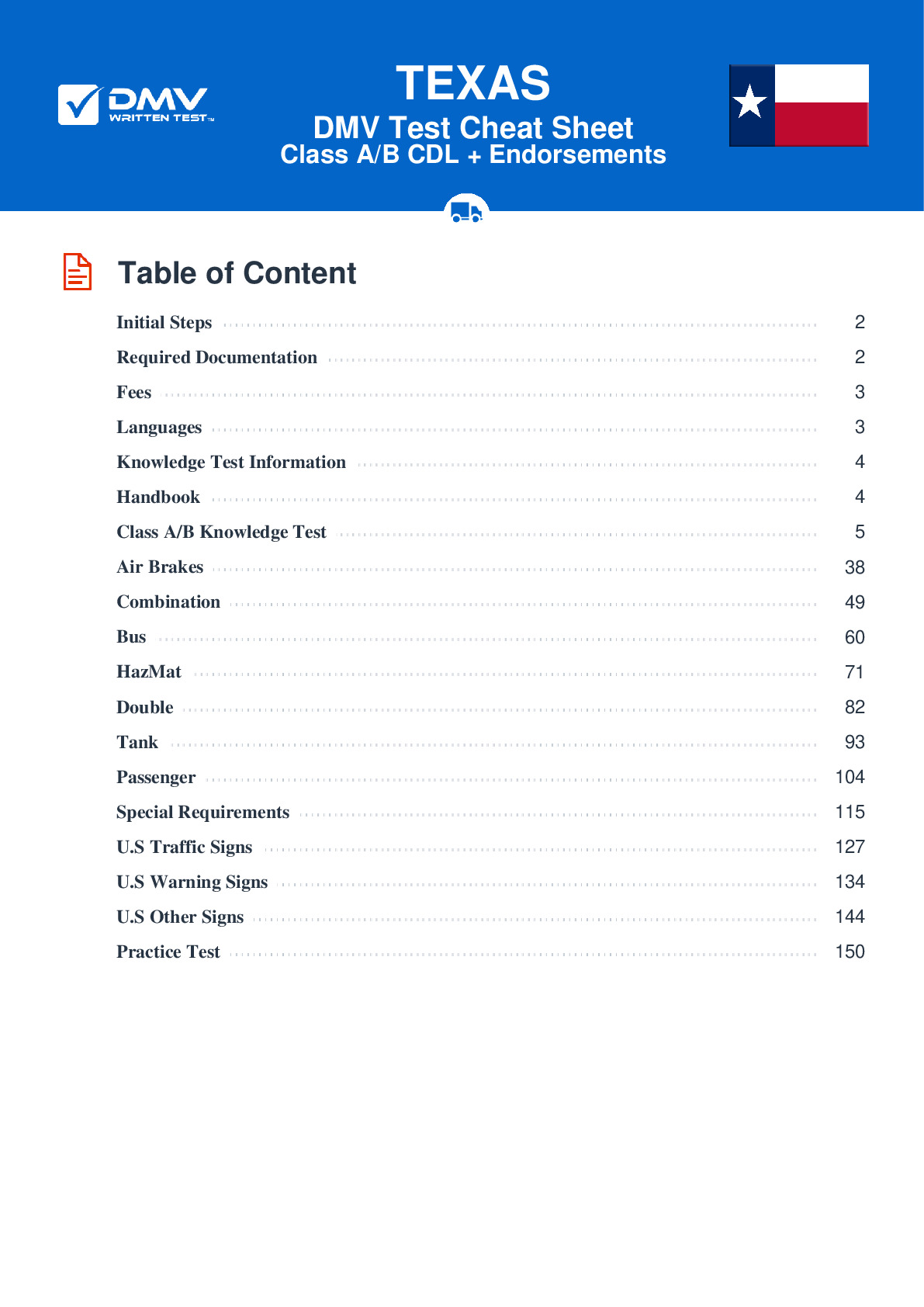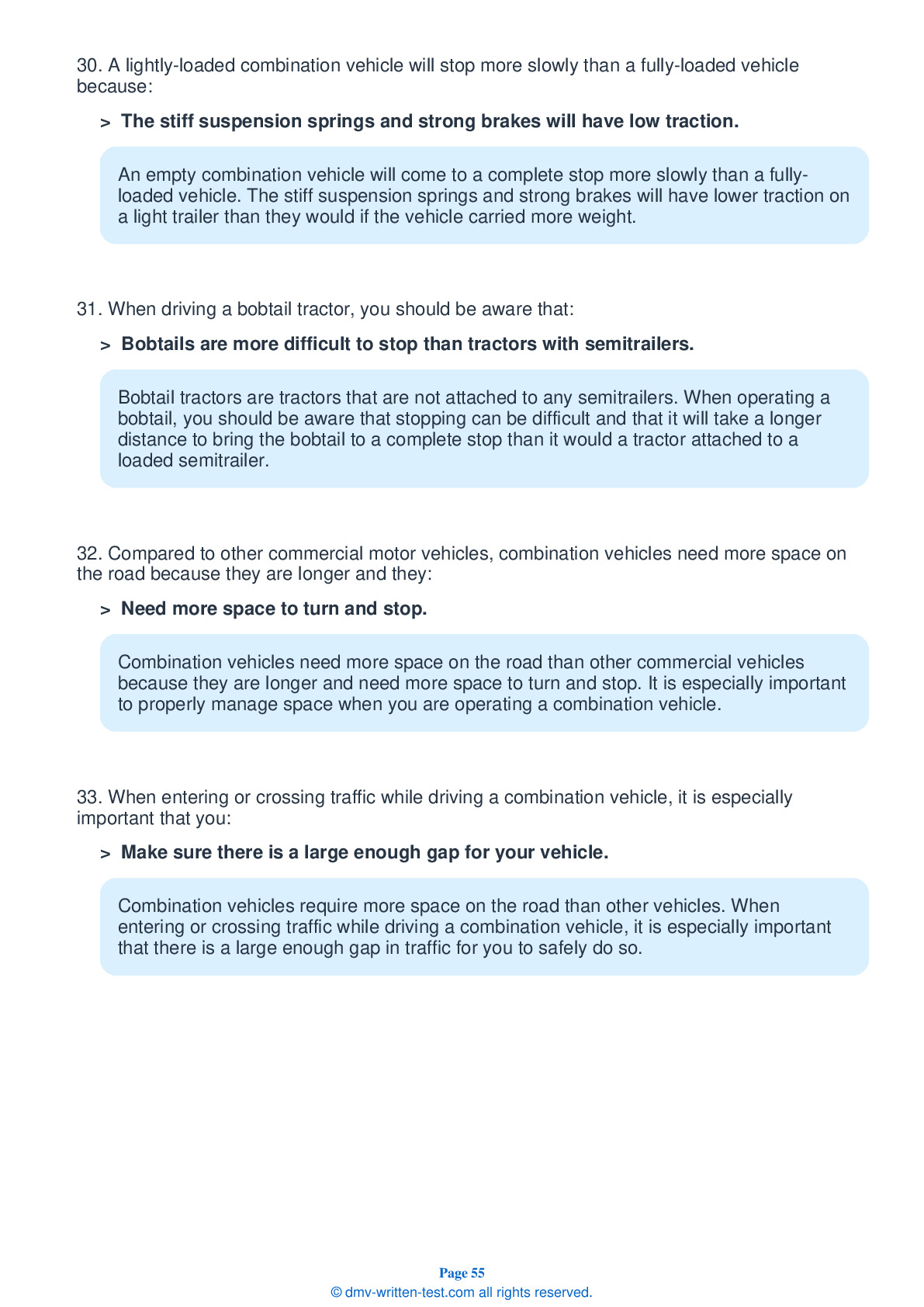Combination
All applicants who are applying for a Class A CDL should be prepared to take the Combination test. This test covers information found in Section 6 of the Texas Commercial Motor Vehicle Drivers Handbook. Section 6 provides the information needed to safely operate tractor-trailers, doubles, triples, and straight trucks with trailers. The test is made up of 20 multiple-choice questions, and applicants will need to correctly answer a minimum of 16 questions to pass. The Combination test is not a replacement for the Double/Triple endorsement test.
Number of Question
Passing Score
8. Before a drive, ensure that air flows to all trailers by:
Explanation
Before a trip, ensure that air in the air brake system reaches all trailers. Do this by waiting for air pressure to build, then sending air to both the emergency and service lines and opening the shut-off valves on the rear of the last trailer. If air escapes from the shut-off valves in the rear of the combination, the air is being supplied to the entire vehicle.
9. The service air line is attached to the:
Explanation
The service air line carries air and is controlled by either the foot brake or trailer hand brake. The service air line is attached to relay valves, which allow the trailer brakes to be applied quickly.
10. Trailers with low underneath clearance may be difficult to drive:
Explanation
Railroad-highway crossings may be difficult to cross when pulling a trailer with a low underneath clearance. In particular, both low-slung units and single-axle tractors pulling long trailers are especially challenging to drive over raised crossings.
11. When entering or crossing traffic while driving a combination vehicle, it is especially important that you:
Explanation
Combination vehicles require more space on the road than other vehicles. When entering or crossing traffic while driving a combination vehicle, it is especially important that there is a large enough gap in traffic for you to safely do so.
12. Large combination vehicles take the longest amount of time to stop:
Explanation
Large combination vehicles take longer to stop when they are empty than when they are loaded. The decreased weight causes a vehicle's wheels to have decreased traction on the surface of the road.
13. A lightly-loaded combination vehicle will stop more slowly than a fully-loaded vehicle because:
Explanation
An empty combination vehicle will come to a complete stop more slowly than a fully-loaded vehicle. The stiff suspension springs and strong brakes will have lower traction on a light trailer than they would if the vehicle carried more weight.
14. Fully-loaded rigs:
Explanation




